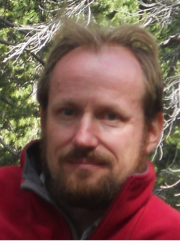 The operational performance of the ALS has improved continuously after overcoming the challenges presented by the injector upgrade to enable top-off operations in 2007. In the last six months, reliability, mean-time-between-failures and mean-time-to-recovery have reached levels never before achieved at the ALS (see this month’s article “Twelve Superlative User Weeks at the ALS”). This includes three periods of more than 10 days each without any unscheduled interruption. Performance at this level is the result of the hard and well-planned work of a large team of people.
The operational performance of the ALS has improved continuously after overcoming the challenges presented by the injector upgrade to enable top-off operations in 2007. In the last six months, reliability, mean-time-between-failures and mean-time-to-recovery have reached levels never before achieved at the ALS (see this month’s article “Twelve Superlative User Weeks at the ALS”). This includes three periods of more than 10 days each without any unscheduled interruption. Performance at this level is the result of the hard and well-planned work of a large team of people.
The core operations groups at the ALS are combined under David Robin, the Division Deputy for Accelerator Operations and Development, and include the Accelerator Physics Group, the Accelerator Operations Group, the Floor Operations Section, and the ALS Procedure Center. They work closely together with many other groups, particularly in ALS Engineering, to maintain and continually improve the high-quality operations of the ALS.
One essential component in this improvement process is excellent communication between the various groups, including the sharing of work planning and feedback mechanisms, both of which also play essential roles in our integrated safety management strategy. In fact, many of the improvements in planning, communication, and quality assurance that were triggered by improvements in our safety culture have also resulted in significant improvements in operational reliability.
There are many ongoing projects to renew the ALS, upgrade its performance, and increase its capacity. After a period of relative quiet about 3–5 years ago, the recent past has been very active. Even though it is very exciting, at times it can also be challenging to execute all projects within the constraints of ALS’s lean staffing. Recent major upgrades to the accelerator include the RF upgrade (headed by Ken Baptiste), the instrumentation and controls upgrade (Greg Portmann), and the brightness upgrade (Arnaud Madur and myself). These upgrades will ensure that the ALS accelerator will remain competitive with the newest third-generation light sources in terms of brightness, stability and reliability. We also support the ALS engineering groups in implementing new beamlines, including the installation of new, advanced insertion devices as part of the ALS strategic plan. I am very proud to be a member of this strong and dedicated team that keeps the ALS at the forefront of synchrotron light sources.
I want to emphasize that we warmly welcome input and feedback from users and staff. It is often your input that has proven to be essential in helping us to improve the facility. A good and informal opportunity to talk with us or ask questions is the bi-weekly user forum (cookie time). You can also contact us at any time to provide operational input or express concerns:
Christoph Steier, 510-495-2992, CSteier@lbl.gov
Tom Scarvie, 510-486-7697, Tom_Scarvie@lbl.gov
Warren Byrne, 510-486-7517, WEByrne@lbl.gov
David Robin, 510-486-6028, dsrobin@lbl.gov